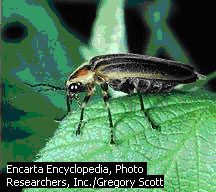 Identifying as a Jew
Identifying as a Jew


4 min read
Thou shalt not vacuum thy fellow.
"Uh oh, more vacuum food," I said to my three year old daughter, pointing to the bug on the wall.
"Eeeeeeeeeeeeeeeeeeeeew," she said, "it's an ichy buggy."
I got the vacuum out, plugged it in and flipped it on. It roared to life.
But just as I was lifting the hungry nozzle to the bug, pleased that it was about to be sucked out of my living room and into the darkest recesses of my vacuum's dusty interior, something truly and utterly amazing happened:
The bug switched itself on.
"Hey! It's a firefly!" I said, suddenly transported by association back to the happy days of youth when my neighbor and I would chase the green phosphorescing creatures around the yard at twilight after a long summer day of play.
"I can't kill this bug." I said to my daughter. "These bugs are our friends."
With that proclamation of the bug's newly elevated status in our household, we trapped the creature in a cup, escorted him to the door, and watched him fly off into the night.
 Now there's got to be a lesson here, I said on further reflection, and I think I've found one. But first, a little bit about the firefly:
Now there's got to be a lesson here, I said on further reflection, and I think I've found one. But first, a little bit about the firefly:
The firefly belongs to the Family Lampyridae, which makes it a type of beetle, or in less technical jargon, a big yichy bug (yichyus buggyus). The scientists call the light "bioluminescence," bio meaning "life" and luminescence -- well you figure that one out. Both males and females can generate the light. The scientists say that the light is used to attract the opposite gender but my daughter and I believe that it might also be used for more complex comms such as, "Help I'm about to get sucked into a vacuum cleaner!" and "Please somebody tell Loraine I love her!"
Anyone who has ever tried to change an incandescent light bulb immediately after it goes out can attest to the fact that light production is often accompanied by the generation of heat. In layman's terms, that's called wasting energy, or more technically "throwing good money down the drain." Such is the work of imperfect man.
The firefly however, the work of the perfect Creator, generates almost no unwanted heat during bioluminescence. Furthermore, the light is created by a chemical reaction between oxygen from the air with a fat called luciferin. Did you catch that one? The firefly turns fat into light. Someone market that one and donate ten percent of the profits to charity, thanks. Can you imagine? "I'll have a double order of greasy French fries please. My wife says that I've been a bit dim lately."
And speaking of food, amazingly most adult fireflies eat just a little nectar or nothing at all.
So what is the lesson of my encounter with this insect?
Never suck your fellow Jew into a vacuum cleaner in the mistaken notion that he's a yichy bug, because really he's a beautiful firefly.
Never suck your fellow Jew into a vacuum cleaner in the mistaken notion that he's a yichy bug, because really he's a beautiful firefly.
There are times when a fellow Jew can look ugly in our eyes. He can be really annoying, even pesty. We feel morally superior. We feel, well I'll say it, like sucking them into a vacuum cleaner!
But if we remember at that very moment that they are actually capable of the most beautiful luminescence, that they have within them the potential for the most brilliant Godly light, that their holy souls will sooner or later shine forth gloriously for all the world to see... we'll quickly put away the vacuum cleaner.
I have no doubt that my old chum the firefly is telling his friends to this very day, in some secret bioluminescent code, the story of his narrow escape from the giant sucking metallic monster. Oh no, wait a second. He's not. They only live between one and three weeks.
But at least we can say the following thing in remembrance: In the short period of time in which we were privileged to know him, he has fulfilled his true purpose by bringing a little more light into our lives.
Factual information about fireflies taken from "Firefly." Microsoft® Encarta® 2006.
